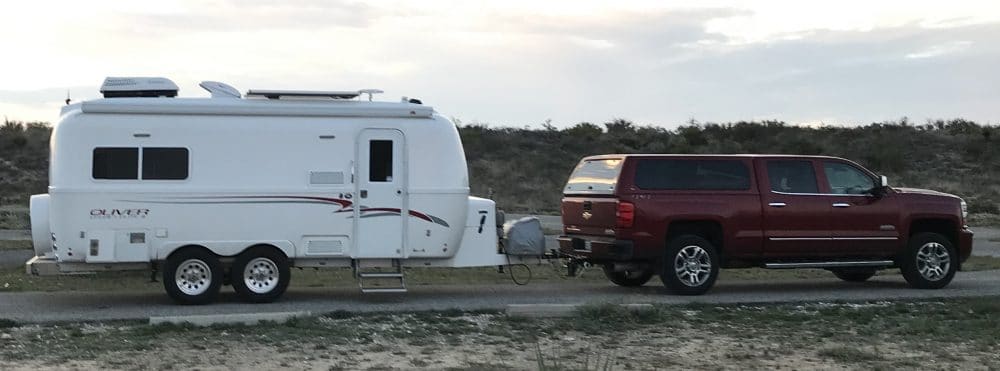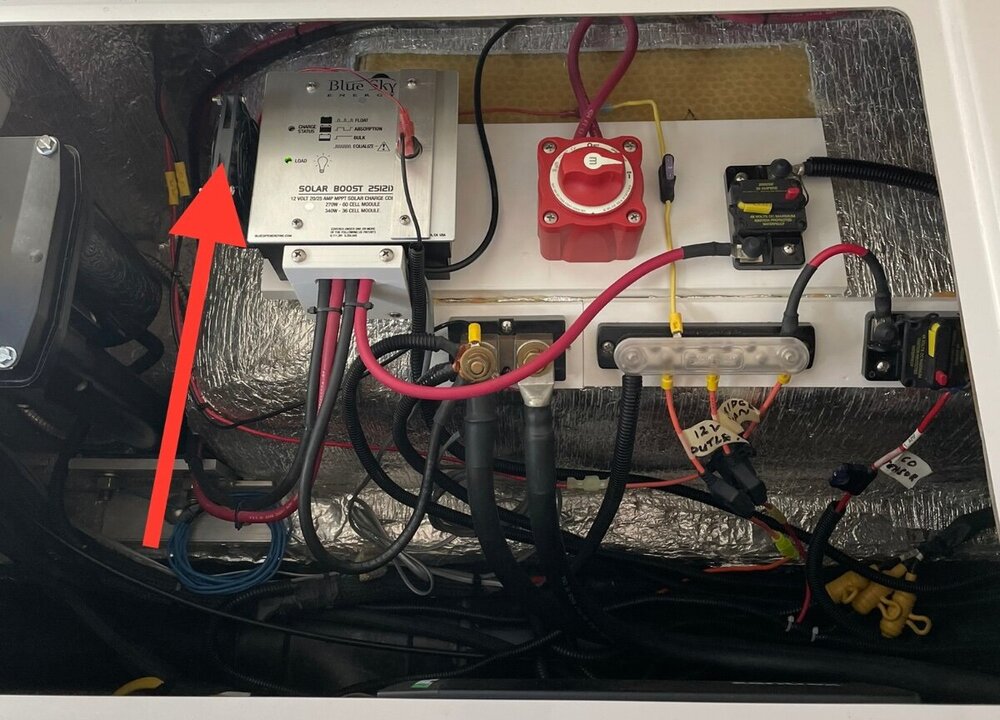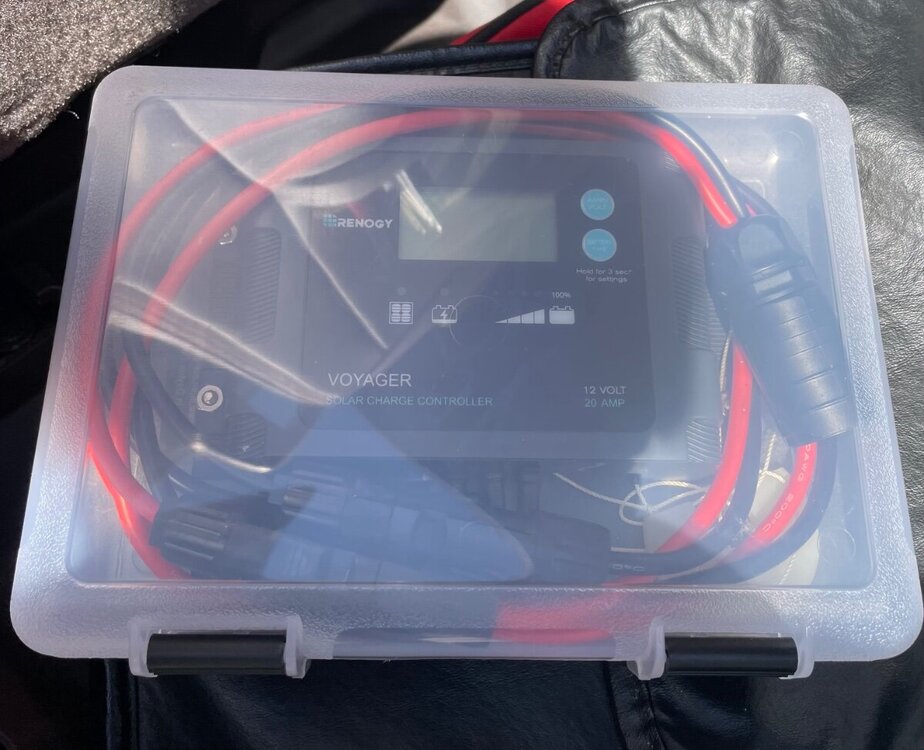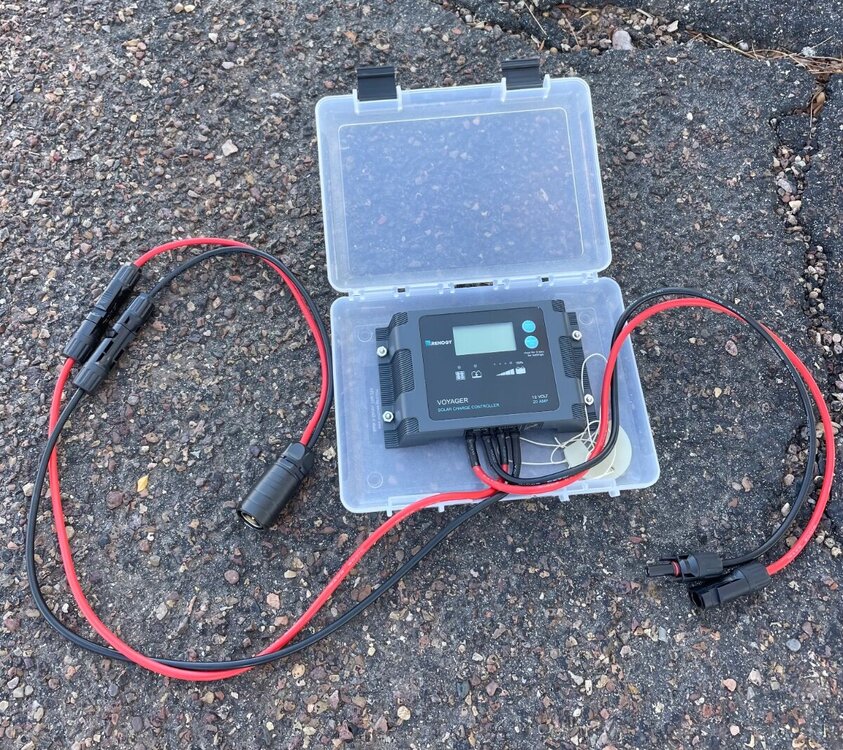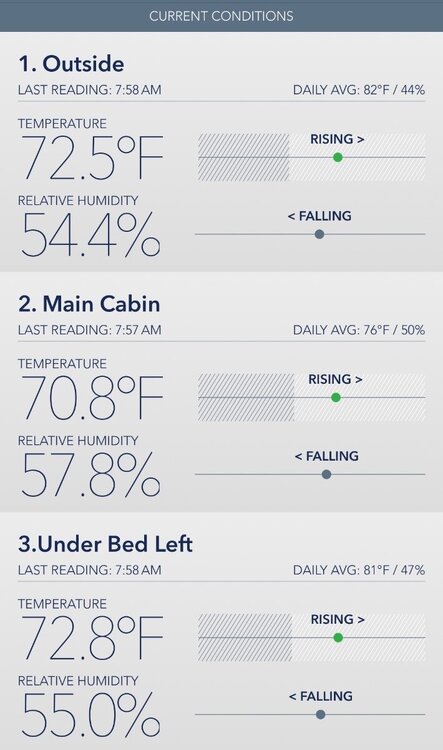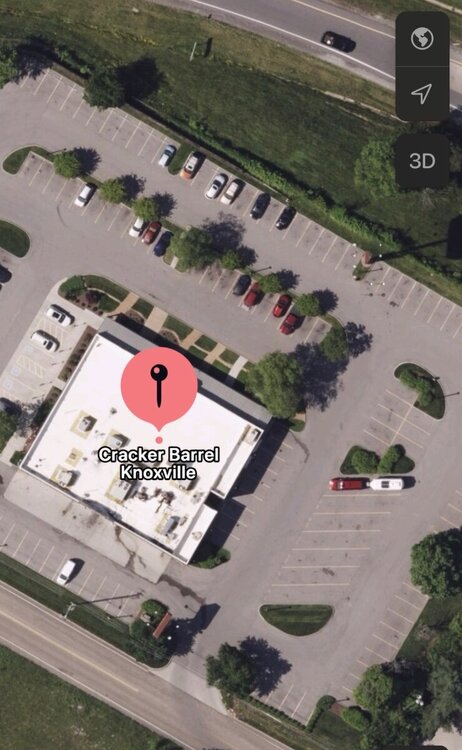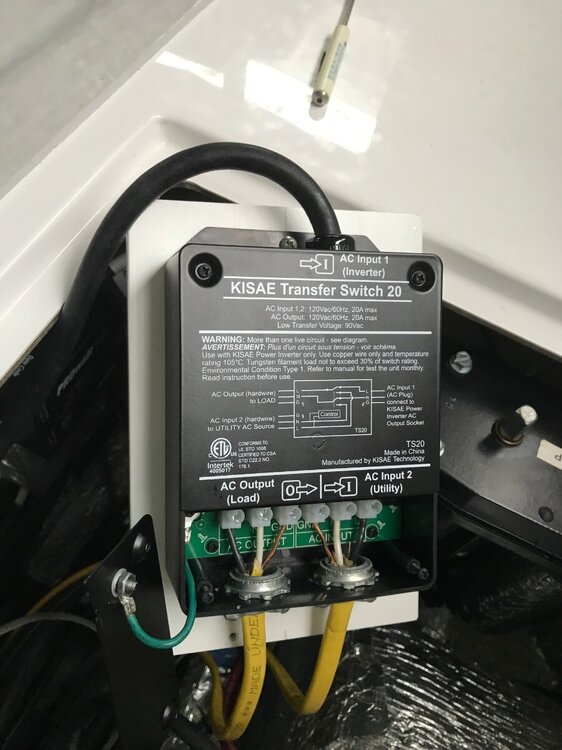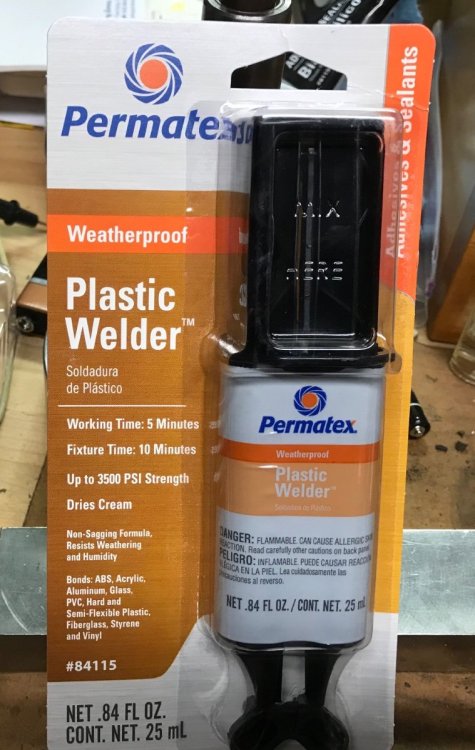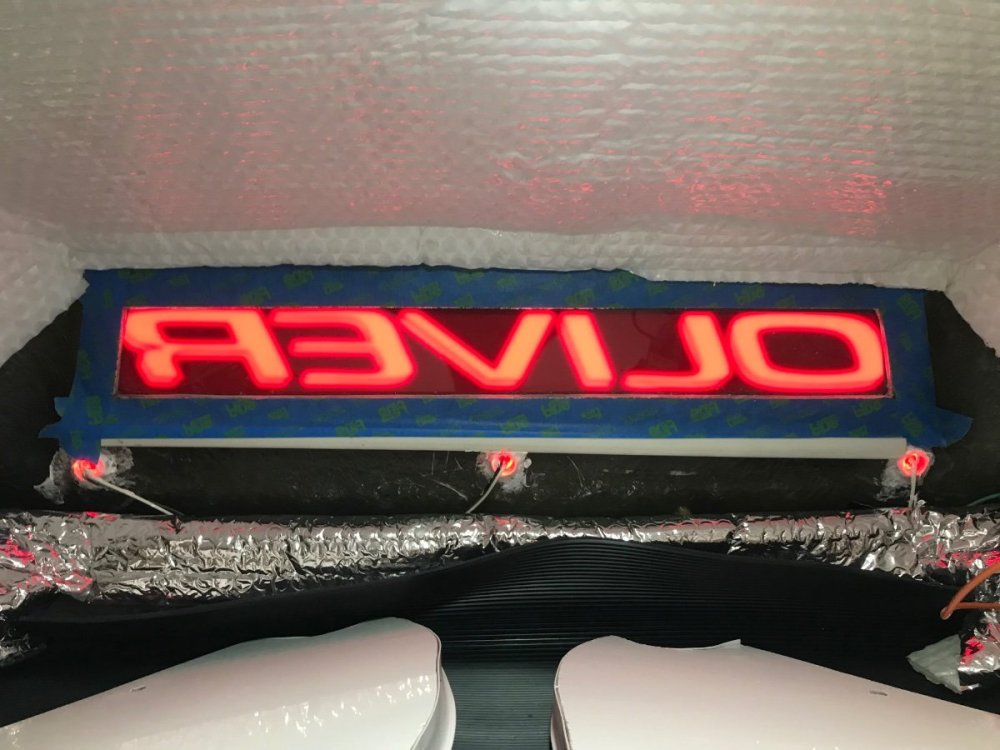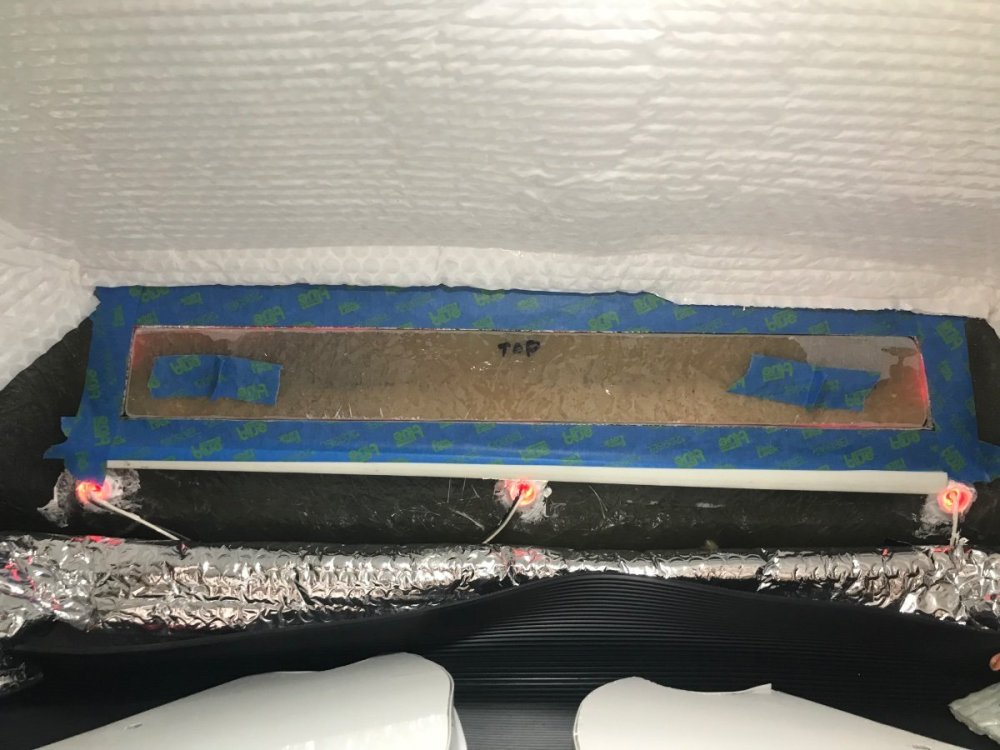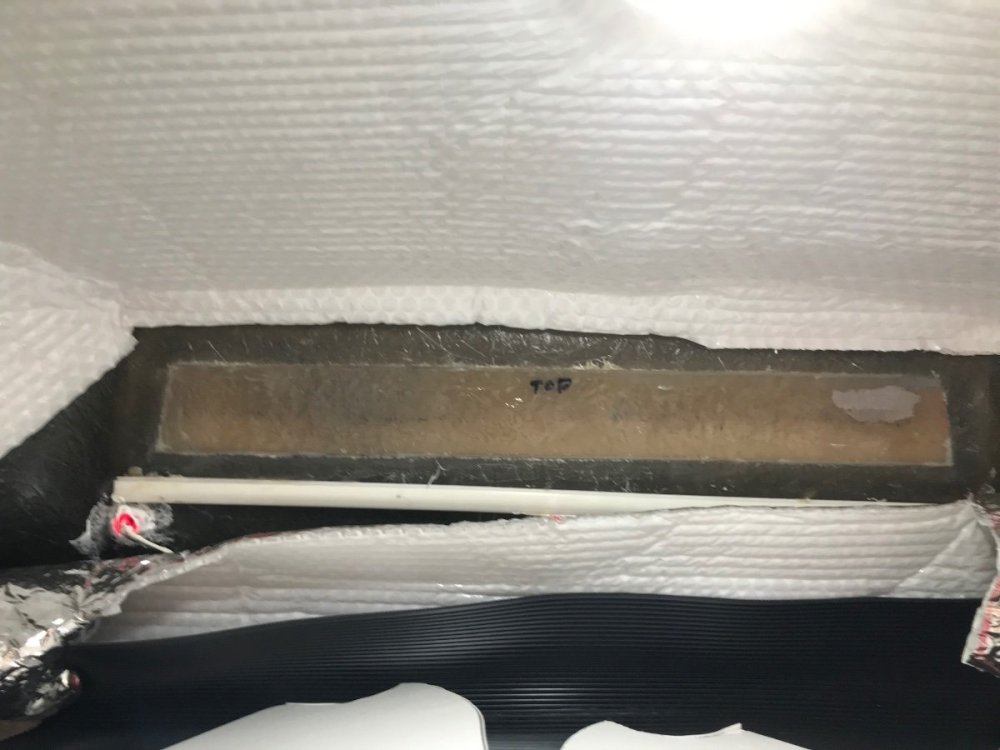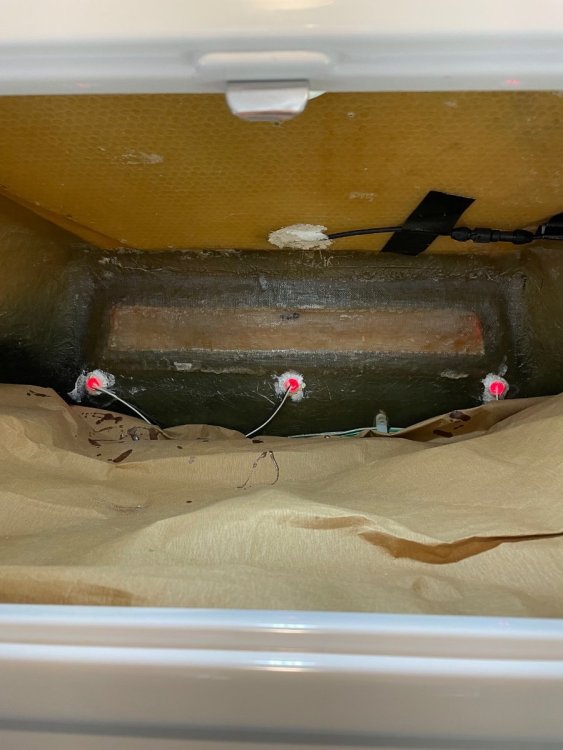-
Posts
413 -
Joined
-
Last visited
-
Days Won
17
Everything posted by mountainoliver
-
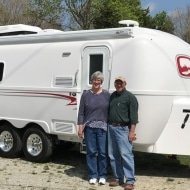
Toilet and Black tank smell..
mountainoliver replied to csevel's topic in Mechanical & Technical Tips
Along with everything else that has been suggested, recheck the toilet flange to make sure that it isn’t cracked. Mine started to smell on occasion and a little at a time then gradually became worse. I found out that the cheesy plastic flange was cracked, allowing sewer gas to escape and eventually liquid as well. I replaced mine with a stainless steel flange and fastened it down using all six available mounting holes with #14 stainless screws. -

Upgrading the MPPT SC for Suitcase Solar
mountainoliver replied to jd1923's topic in Ollie Modifications
I’m not sure on why the Furrion inlet itself is only rated at 10 amps even though (I think) #10 wire is used. Also it just occurred to me that in the DC world for longer wire runs it’s a good idea to use large wire to reduce the losses. Maybe that’s why they use larger wire than really needed even though the plug itself is the limiting factor? I must have read somewhere that the inlet and the available Cnlinko plugs were rated at 10 amps. That may have been my deciding factor for choosing a 10 amp fuse. Seems like I recall that when I was searching for a suitable inlet that they were mostly rated at 10 amps. I probably didn’t dig deeper into it at the time because my small panels weren’t going cause any issues. At the time I only wanted a small easy to carry/store portable panel to supplement the Oliver panels. Even though I can run my air conditioner on my 300 amp/hr batteries I don’t really consider doing that because it would take an unreasonable amount of time to recharge the batteries. In recent years the prospect of running an air conditioner for a meaningful amount of time has become a reality with the large capacity batteries and large solar panels which I have neither unfortunately. Good question though. -

Upgrading the MPPT SC for Suitcase Solar
mountainoliver replied to jd1923's topic in Ollie Modifications
My Furrion/Cnlinko inlet is an older design. The socket itself is all metal the new ones are plastic. When I ordered mine, Furrion advertised the metal version but sold the plastic version both with the same model number. I called Furrion and the guy I talked to sent me another plastic version and a cable tv inlet. After further conversation, he found a metal version in someone’s desk in their office and sent that one to me. Apparently they no longer make the metal version. By the way, the Furrion/Cnlinko solar inlet has the same mounting hole pattern as the Furrion power inlet if interested. -

Upgrading the MPPT SC for Suitcase Solar
mountainoliver replied to jd1923's topic in Ollie Modifications
Ronbrink, why am I using a 10 amp fuse? My portable solar panels are 100 watts total. That’s all I needed. I haven’t looked at the plug/socket amp rating but that may be 10 amps. -

Upgrading the MPPT SC for Suitcase Solar
mountainoliver replied to jd1923's topic in Ollie Modifications
John, the Blue Sky solar controller is supposed to be mounted vertically (I think according to the manual) but that’s not practical every time. I added a fan and a snap type temperature sensor. I don’t remember the on and off temps but typically this type of sensor has a 30 deg dead band. The fan only draws about a tenth of an amp and run it on a one amp fuse. I added some slots in the plastic box for the air to pass through and this setup has made a huge difference in the temperature. -

Upgrading the MPPT SC for Suitcase Solar
mountainoliver replied to jd1923's topic in Ollie Modifications
John, that’s approximately what I do for my suitcase solar. I wasn’t real pleased with the SAE plug being used for repeated connection disconnection so I added a secure two prong Cnlinko socket to the outside of the trailer. The Cnlinko plugs have a stainless latch that secures the connection.The Cnlinko socket is connected through a 10 amp fuse directly to the shunt for the Blue Sky solar controller. The Blue Sky IPN Pro remote displays all of the battery input information such as roof mounted solar, shore power battery charger, and the suitcase solar panels. I removed the solar controller that came with the suitcase panels and plug it in to the trailer and then plug the panels into the controller using the generic solar plugs. This allows a little bit higher voltage from the panels to travel the long distance from the panels to the controller. The wires from the controller are only about two feet long so less loss. All wiring is #10. The box that the controller is in is not waterproof so I just set it on top of the tire under the fender skirt. This idea was originally developed by John Davies. -
This is the tester that I use before I plug in. It displays the voltage and checks several different potential power issues. Keep in mind that this type of meter only gives you a snapshot of power issues. Most of the power issues thus far discussed have been intermittent and random in nature. The power issue that I mentioned only occurred every once in a while but was bad enough to cause damage even with the factory installed surge protector. The actual surges were not the problem because the surge protector stopped them. The problem was that the power was switching on and off rapidly and several cycles in a row.
-
Just for an additional reference point we’re currently camping in Winslow Arizona so take into account the local weather conditions. These are screenshots from my various camper sensors.
-
I would continue to search for the source of the high humidity before you open up one of the outside vents. I think opening up one would be a mistake. Originally the outside vents never were in any way connected to the inside of the camper. They just vented to the back area of the old absorption fridge. Opening the outside vents now will allow the outside environment direct and unfiltered access to the inside of the camper. Including water intrusion, dust, dirt, insects, and anything else that can get through the outside louvers. I really can’t imagine the new fridge is creating moisture inside the camper. The condenser coils on the back of the fridge only get warm and transfer that warmth to the surrounding space. Inside the fridge stays fairly humid but that will eventually collect on the freezer supply lines and need to be periodically manually defrosted. I really have not noticed an unusual increase in humidity since I installed my Nova Kool fridge five years ago. The camper is a small space with a lot of hard surfaces, humidity does rise and drop somewhat rapidly. I do use a dehumidifier periodically and use the Maxxfan and bathroom vent as needed. It is a balancing act at times. Just my opinion of course.
-
Mike, nice work! The installation looks perfect. I know you’ll love it. These fridges are like your home fridge, they just work no fiddling to keep it cold inside!
-

New axles may not fit all older sub-frames
mountainoliver replied to Wayfinder's topic in Mechanical & Technical Tips
-

Andersen WDH without chains, Sway Only?
mountainoliver replied to Ralph Mawyer's topic in Towing an Oliver
I agree with Frank with a very important additional point. The tapered shank is only held inside the aluminum housing by a snap ring set into a shallow groove. I would highly suggest that if the whale tail is not used, a collar and the safety pin be used it hold the assembly together. -
Oops, yes thanks for reminding me. That is for the Dometic air conditioner as supplied by Oliver for my 2017 LEII. I’m not sure if my suggestion is correct for the Truma unit.
-
Yes, for example the Battle Born folks provided the charge parameters for their batteries. Blue Sky Battle Born setup.pages I sent the BB folks a copy of the Blue Sky setup pages and they supplied the parameters that they wanted to see for the 3 BB batteries that I have. You will have to do the programming procedure as per the Blue Sky instruction manual. Very easy process.
-
I would remove the air filter and check the condensation drains. They pass through the air conditioner to roof seal on each side. There should be some sticky caulk around each tube. Also I would check the four hold down bolts. There’s one in each corner. To access these you’ll need to remove the inside cover/trim. I think that there’s six screws holding the cover. Don’t over tighten the bolts, just make sure that they are snug.
-
In 2017 when we picked up hull 208, the factory had not balanced the tires. The guys lifted the camper in the shop with all four tires off the ground, removed all four, and balanced them. The three jacks readily lifted the camper. Since then I have had one side or the other off of the ground on several occasions in order to level the camper. That said, I have the Andersen leveling wedges and use them nearly every time we camp instead of using the jacks for anything more than just stabilizing. Early on, there was one instance that I know of where a rear bracket was not completely welded and broke when the camper was being stabilized. Other than that one incident I have never heard of any issues with the ability of the jacks not being able to lift the LEII. Understandably, with an abundance of caution/safety, Oliver has backed off on suggesting that the jacks can be used to completely lift the camper. We must remember that the lightest our campers will ever be is just before we take possession of them. After that, they begin to gain weight. The phrase “just because you can, doesn’t mean you should” comes into play here.
-
topgun2, this is what happens when you stay in Cracker Barrel parking lots too often! Google maps cameras catch you. This location happens to be on our way most anywhere west of Virginia so we stay here often. Maybe too often! 🤪
- 784 replies
-
- 11
-

-

Finally! My Batteries and Inverter Now Run My AC!
mountainoliver replied to Spike's topic in Ollie Modifications
I am also looking forward to replacing the original air conditioner with a quieter version. Still waiting to find one that works out of the box without me rigging home made fixes to make it operate as it should. A year or so ago I almost purchased a Houghton unit until I found out that they had changed the operating profile. I had wire that color matched the furnace wire, a manual thermostat, I had run a pull wire from furnace to the thermostat area, sealant, etc. all ready. I even had a hoist partially set up to lift the old unit off and set the new unit on. I’m still waiting and looking. The Freshjet unit is one that now looks promising. -
jd1923, maybe a couple of reasons to want a separate charger/inverter. My older hull number trailer has separate units already and it all works well so I’ll probably just leave well enough alone. Also, seems like the newer trailers with the combined units are having issues with both. If one unit goes down nothing works. I seldom ever turn on the charger anyway, I let the sun do its thing. Seldom use my generator as well. We’ll plug in if it’s available, sometimes. Really the only thing that must be plugged in is the air conditioner, everything else can run comfortably on either DC directly or on the inverter. The only situation that we would have had a problem is when we were caught in the Texas deep freeze about four years ago. Several days with little sun and highs in the twenties and lows in the single digits. Fortunately we had shore power the whole time. It’s a blessing to be able to own a trailer that is set up so that it really doesn’t matter if we have power or not and can easily allow us to camp most anywhere. I love it when a campground apologizes for not having a site with water or electricity and being able to say that it doesn’t matter we’ll be comfortable anywhere.
-
jd1923 I agree 💯. I basically did the same thing. I added the automatic transfer switch for the air conditioner and several months later switched to lithium batteries. However, I have not had any issues with running the Dometic air conditioner on the inverter. It does get warm but as long as my total watt load does not exceed 1,800 watts the Zantrex inverter should handle it. The specs say it is capable of handling 1,800 watts continuously and 3,000 watts intermittently. I have run the air conditioner for about a half hour and the inverter was very warm but I wouldn’t say that it was hot. It does have an overheating shut down sensor and it has never shut itself off for any reason. At some point in the future I plan on getting a 3,000 watt inverter but I’m not interested in one that also incorporates a charger as well. As of now I only use the air conditioner to cool down the trailer in the evening then open windows overnight unless we’re on shore power, then the air conditioner stays on if necessary.
-
I also have never run my air conditioner on the inverter if the trailer is on shore power. In fact I never turn on the inverter if the trailer is already on shore power. I’ve never had a reason to, either the trailer is on shore power or not. I know some folks leave the inverter on all the time and that really shouldn’t hurt anything but I don’t.
-

Finally! My Batteries and Inverter Now Run My AC!
mountainoliver replied to Spike's topic in Ollie Modifications
Concerning the issue of running the Dometic air conditioner on battery power through the 2,000 watt inverter. I realized that I stated that the inverter could handle 2,000 watts load. (I have gone back to my original post and corrected it) Actually the inverter is very similar to a 2,000 watt generator. The Zantrex inverter will run 1,800 watt loads continuously and 3,000 watts surge not 2,000 watts continuously. The Dometic air conditioner draws about 1,600-1,700 watts. The inverter will be at it’s limits so absolutely no other AC loads while running the air conditioner! -
I used this transfer switch for running my air conditioner through the inverter. Only two cables no issues getting the switch wired. I did change out the cheap plastic wire strain relief bushings for standard metal clamp type bushings. The cable on the right comes from the power distribution panel and the one on the left goes to the air conditioner. I’ve checked the terminal strip screws on several occasions and they’ve always been tight. Don’t try to use the Zantrex 15A switch, it’s just enough to run the Penguin AC Unit but gets pretty warm after a few minutes even with the soft start module. I switched over to three Battle Born batteries a few years ago and they can run the AC unit for maybe a couple of hours, although I’ve never run it for more than a half hour or so because I haven’t wanted to totally deplete the batteries. My 320 watt solar system would take several days to completely recharge the batteries. The 2,000 watt inverter seems to handle the load well but, I make sure that there are no other DC loads at the same time.
-

Leaking Oliver Light
mountainoliver replied to Mike and Carol's topic in Mechanical & Technical Tips
I have posted this before when talking about this light’s propensity for leaking. My light leaked four times in the first three years of owning our trailer. Oliver caulked it twice and I caulked it twice. I realized that this issue was going to come back over and over so I decided to do one final repair. When I picked up our trailer, I asked for and picked up several sheets of fiberglass scrap cutouts from windows and doors. I used a piece of this to make a plug for the hole. I removed the light and epoxied the plug into the hole from the inside. I used a high solvent based epoxy for this then I later fiberglassed over the plug to reinforce the patch. Now four years later still no leaks. -
Cool, a homemade camper using a utility trailer for the base/frame and using a sheet metal carport/outhouse for the cabin. Ingenious!

